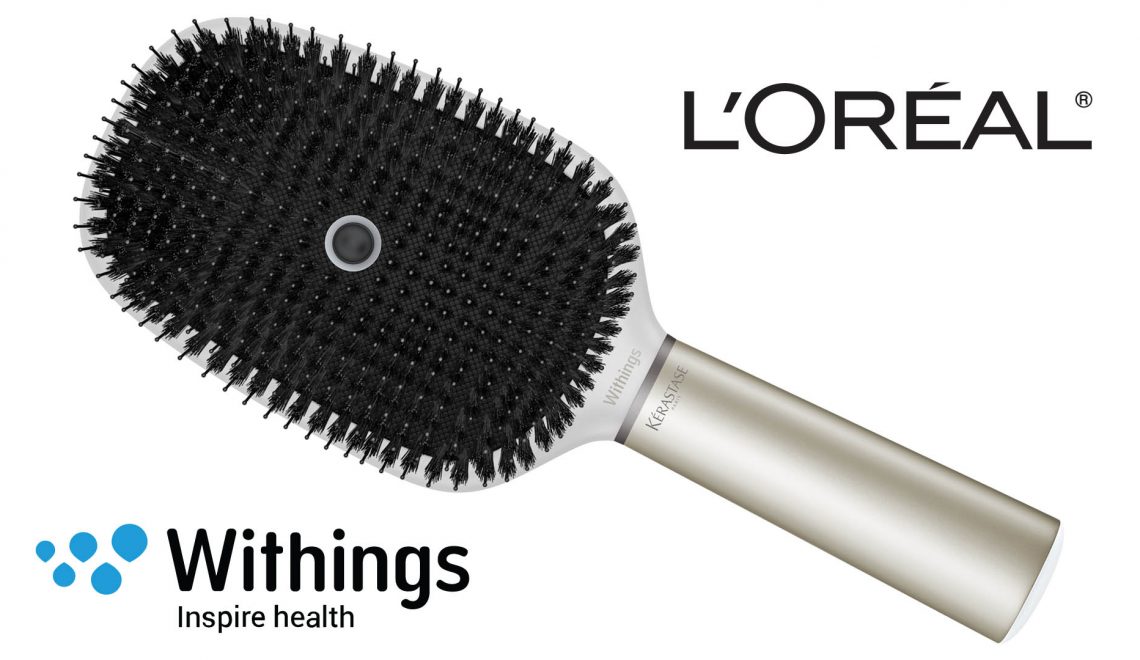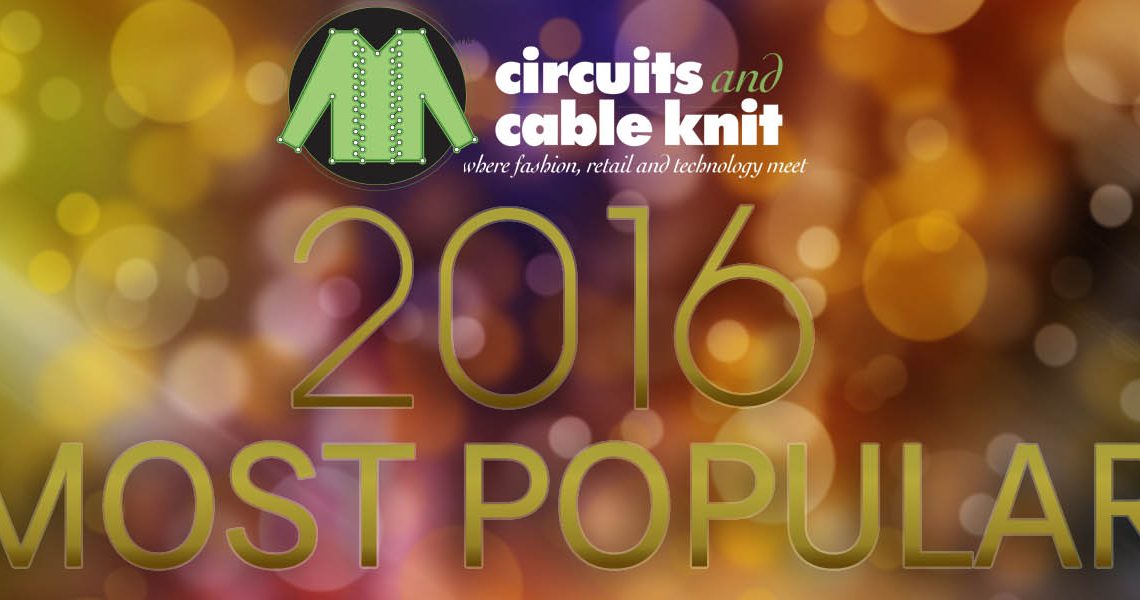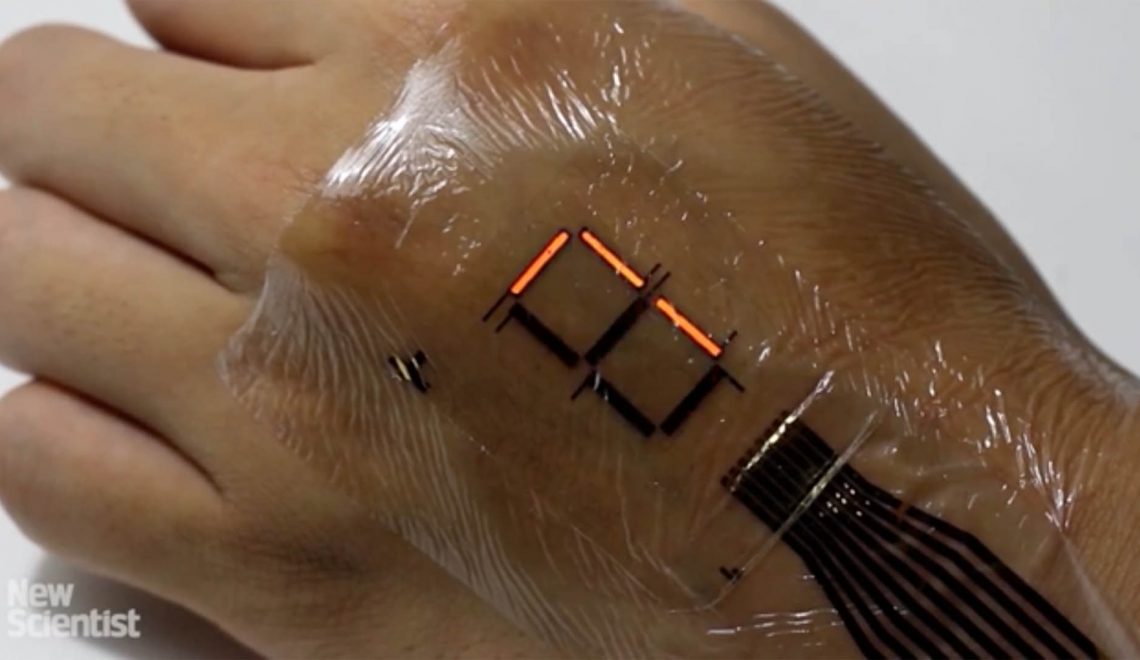If you have ever spent any time in a hospital you know one of the most grating parts of the experience is constantly being connected to various machines. Not only do they limit your movement, all the cords, wires, and tubes make you feel like you aren’t yourself. Wearable “tattoos” have long been discussed as a way to lessen some of the cables while also allowing your vitals to be wirelessly transmitted to your doctors and nurses who might not be in the room. The nomenclature of “tattoo” is a bit misleading; the devices are basically a small BandAid-like sticker that is barely noticeable, like a second skin. Medical device company MC10 looks ready to launch one of the first such wearable later this year, call BioStamp.
The device is pretty amazing. It is a 2.25 x 1.1 inch flexible adhesive strip that is only 3mm thick. It weights only 6 grams (for comparison a US nickel weighs 5 grams) yet contains 32MB of memory and has a battery capable of powering the BioStamp for 36 hours. As far as wireless connectivity, it utilizes Bluetooth Smart (similar to the new Hexoskin) which is an extension of Bluetooth 4.0 that is very power efficient and compatible with smartphones, fitness equipment, and running watches. In terms of sensors, the BioStamp can monitor electro-cardio activity (EKG), electromyography (EMG or electrical activity produced by by skeletal muscles), and movement via a 3-axis accelerometer and gyroscope. No pricing has been announced, but since MC10 is targeting institutions, I would expect the wearable “tattoo” to not be cheap.
If you are looking for something a bit more consumer focused, MC10 also announced a partnership with L’Oreal Group to produce the first stretchable electronic UV monitor. The small sticker is around the size of a half dollar (1″ x 1″) and is only .05mm thick (less than a stand of hair). The My UV Patch changes colors based on your UV exposure, taking into account your baseline skin tone. Simply take a photo of the Patch with your phone (or use NFC on Android) via the associated app and it will be analyzed to determine how much sun you have gotten. The app can then advice you to cover up, apply sunscreen, or head indoor. My UV Patch will be released later this year through L’Oreal Group’s La Roche-Posay skincare brand; pricing has not been announced.
Device such as My UV Patch and, more so, BioStamp represent the future of healthcare and monitoring. While BioStamp will likely mostly be used in hospitals and for university and clinical research, over the coming years we expect to see it shift to focus more on the end-user. It is easy to see a day where a device like BioStamp would be prescribed by your doctor, allowing them to monitor your vitals from afar. If you suffer from a blood pressure spike or drop, your doctor would be immediately notified automatically. If you have heart arrhythmia, your doctor could easily look at aggregate data over days or even weeks without requiring you to visit the hospital or wear a clunky monitor. All you need is to wear the almost invisible, waterproof device and have it connected via Bluetooth to your mobile phone. As the wearable “tattoo” technology develops more functionality will certainly be added, perhaps to track blood sugar or oxygen uptake. BioStamp hitting the market is an important milestone in healthcare and they underlying technology has the potential to cause a major shift in the healthcare industry.






